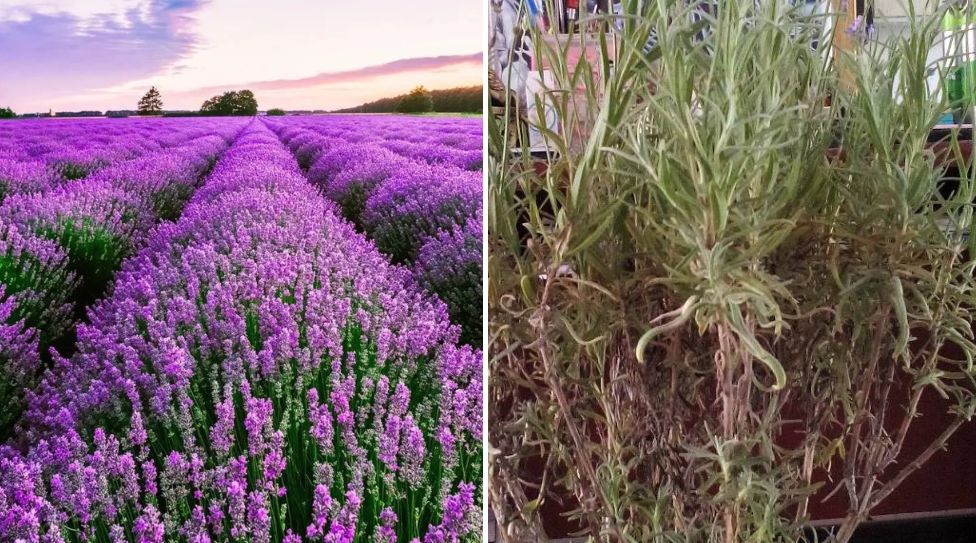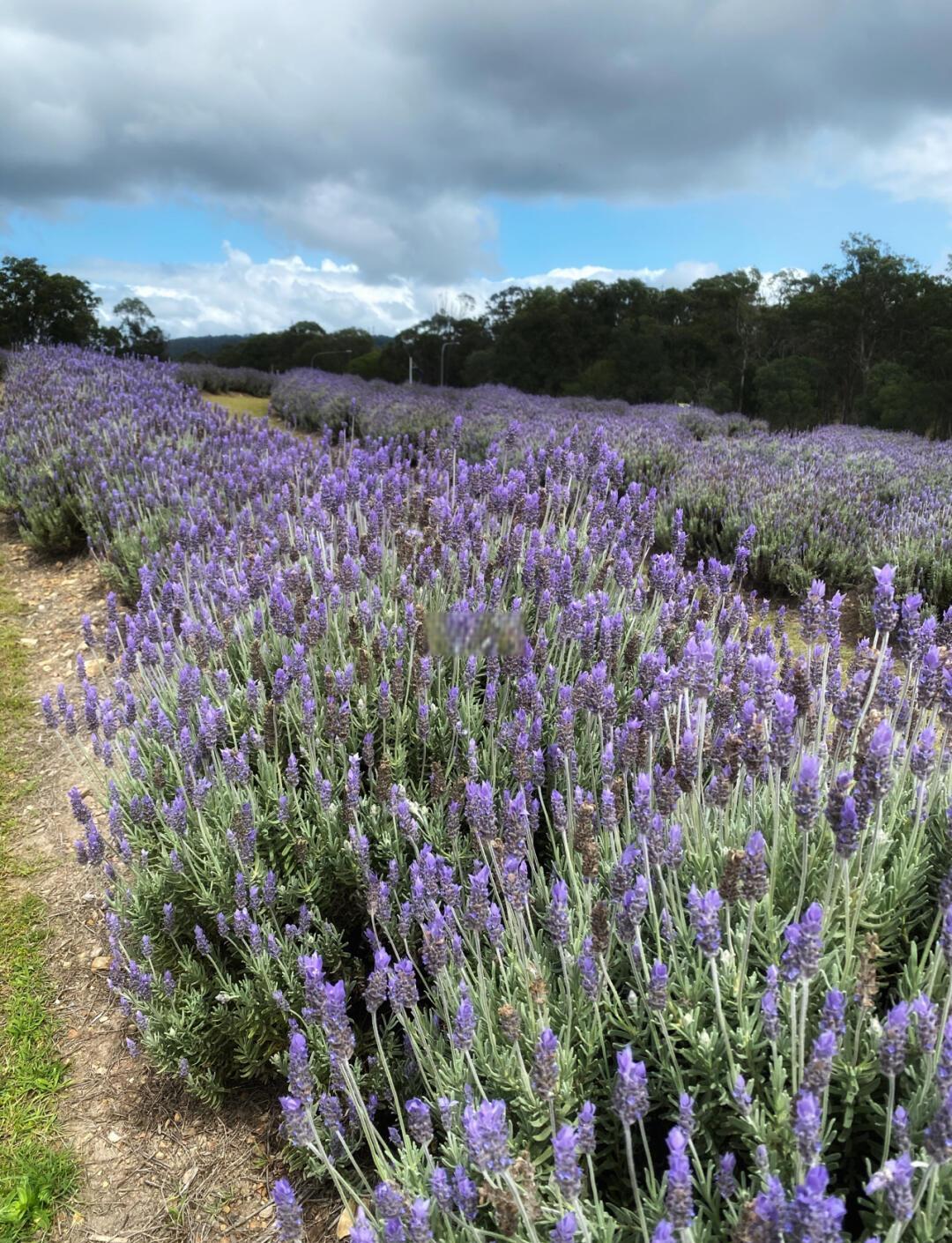Why Lavender Dies: 15 Problems Most Gardeners Never Notice

15 Sneaky Reasons Your Lavender Starts Dying (And What to Do Instead)
Lavender should be one of the easiest plants ever—sun, dry soil, and boom: purple flowers and great smell. But honestly? This plant can be dramatic in all the quiet ways. Mine once went from “pretty and perfect” to “crispy brown twig” in a single month, and I thought it was just bad luck… until I learned lavender has rules. Serious rules.
Here are the most overlooked reasons your lavender may be dying, plus a few extra points people rarely talk about.
1. Too Much Moisture & Humidity (Lavender’s Worst Nightmare)
Lavender comes from hot, dry Mediterranean places. If your garden feels sticky, wet, or foggy all day, your lavender is basically screaming quietly.
Moisture → soggy roots → fungal mess → slow death.
Things that usually go wrong:
- watering “just in case”
- soil staying wet for days
- heavy morning dew that never dries
What helps: plant it where it gets morning sun, good breeze, and only water when the soil feels dry almost all the way down.
2. Heavy Clay Soil That Feels Like Concrete
Lavender roots want space, air, and “freedom,” not a tight mud blanket.
When soil stays wet or compact:
- roots suffocate
- fungus spreads
- plant stops taking nutrients
Fix it by mixing in gravel, sand, or perlite until the soil feels loose and crumbly. Think “beach sand vibes,” not “rice field mud.”
3. Overfeeding With Fertilizer (Lavender Hates Rich Soil)

If you give this plant too much food, it just grows weird: big green leaves but sad tiny flowers.
Keep it simple:
- no high nitrogen
- once in spring is enough
- none in fall
- potted lavender only needs half-strength feed
Lavender likes “poor soil.” Seriously—this plant is low-maintenance but gets dramatic when you try too hard.
4. Mulch That Stays Wet Too Long
Wood mulch + lavender = bad combo.
Wet mulch keeps the base soggy and can rot the crown.
Better ideas:
- tiny gravel
- pea pebbles
- crushed stone
These keep the base dry and warm without soaking the stems.
5. Pruning the Wrong Parts (Especially the Woody Base)
Lavender becomes woody at the bottom as it ages. That part does not regrow if cut.
If you chop into the hard brown wood too far, the plant may never bounce back.
When pruning:
- cut only soft green stems
- trim about one-third of the plant
- avoid cutting to ground level
Light trim after blooming is fine—just don’t saw into the trunk.
6. Not Enough Sunlight (Lavender Needs Intense Light)
Lavender in shade becomes long, leggy, pale, and sad.
It needs:
- at least 6 hours of strong sun
- open airflow
- no crowded corners
If it’s under a tree or behind a fence, move it.
7. Cold Snaps, Frost, and Wrong Variety
Some lavender types handle winter like champs (English lavender), but others hate freezing temps (French or Spanish lavender).
If the variety is wrong:
- roots freeze
- stems split
- leaves drop
- plant dies in spring
Protect with straw mulch or bring pots indoors when frost hits.
8. Plants Packed Too Close (No Air = Fungus Party)

Lavender needs space to breathe. When plants touch each other, moisture stays trapped.
Common signs:
- gray powder on leaves
- mold at the base
- center of plant turns brown
Space them:
- 1 to 1.5 feet for hedges
- 2–3 feet for single plants
If your garden is tiny, grow just one plant in a pot.
9. Soil pH Too Acidic
Lavender loves slightly alkaline soil. Acidic soil messes with nutrient absorption.
Easy fixes:
- add garden lime
- avoid acidic mulches
- test soil once a year
If the pH is too low, lavender slowly weakens no matter what else you do.
10. Bad Drainage in Pots
Lavender in pots can die faster than garden lavender if water collects at the bottom.
Check these:
- Does your pot have real drainage holes?
- Is the soil dense and muddy?
- Is water pooling under the pot?
Use a pot with many holes and add gravel or broken pottery pieces as a base layer.
11. Forgetting Winter Prep (Overwintering Matters)
Lavender likes cool weather, but not freezing for weeks.
If you forget to protect it:
- roots freeze
- stems snap
- plant dries out from cold wind
Bring tender types indoors, or wrap outdoor ones in breathable fabric.
12. Lavender Looks Dead… But It’s Just Sleeping
This plant goes dormant in winter—brown leaves, no flowers, zero energy.
It looks depressing, but it’s normal.
Just don’t:
- water too much
- fertilize
- trim during dormancy
Let it rest. If it’s English lavender, snow even acts like a cozy blanket for the roots.
13. Wrong Pot Size (Extra Point Added)
Lavender hates tight, tiny pots…
but also hates giant pots that stay wet forever.
Pick:
- medium-sized pot
- something slightly snug
- terracotta if possible (dries better)
Too big = root rot.
Too small = roots circling and choking.
14. Watering at the Wrong Time
Watering late in the evening keeps lavender damp all night, which encourages fungus and rot.
Better options:
- water in morning
- let soil dry between waterings
- avoid wetting the leaves
This small timing change saves a lot of plants.
15. Ignoring Old, Tired, Overgrown Lavender (extra point—very common)
Lavender has a lifespan. After 5–6 years, some types get woody, sparse, and tired.
If your old lavender keeps dying back no matter what, it might simply be aging out.
You can:
- take cuttings
- replant a fresh young plant
- give it one last gentle prune
Sometimes “dying lavender” is just “lavender that lived a full life.”



